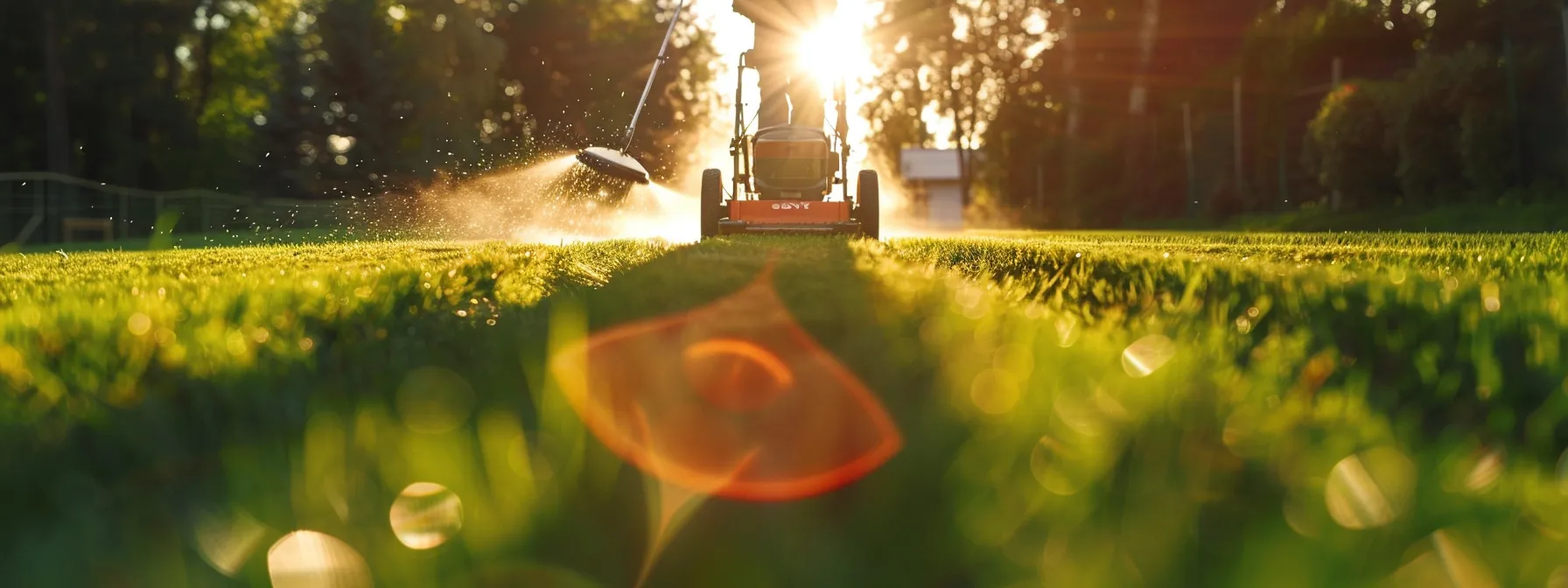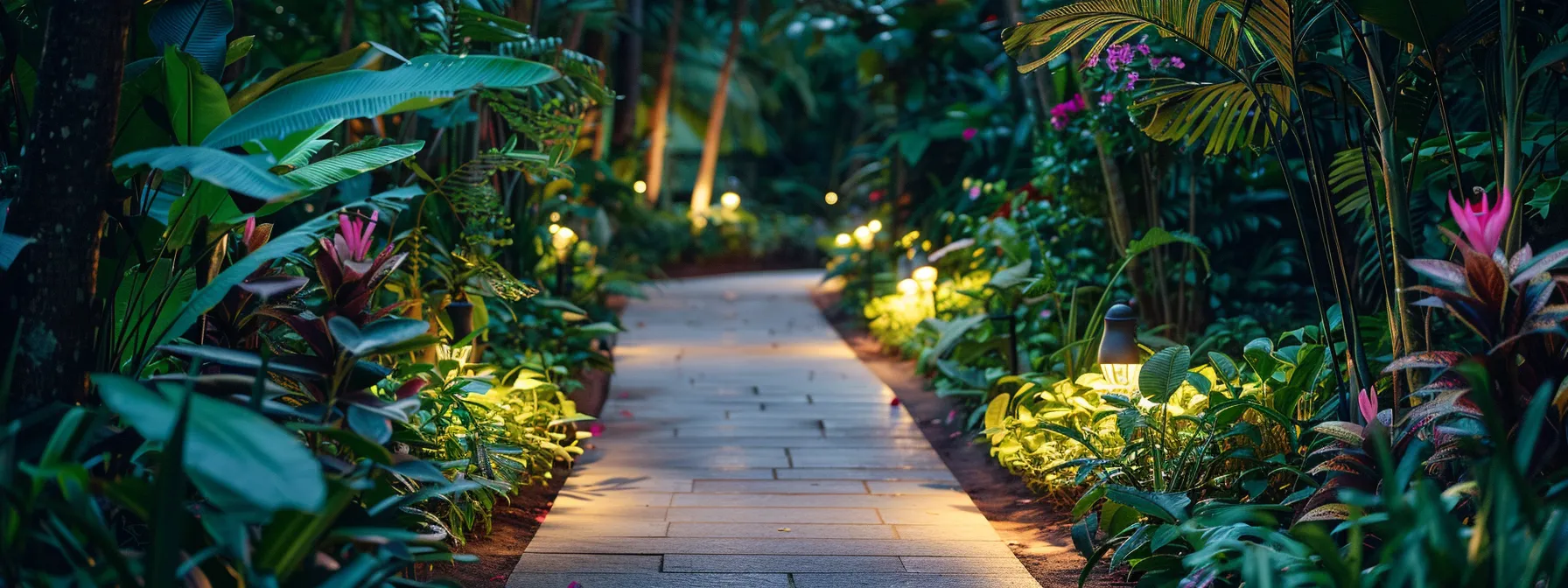Are you struggling to keep your garden hydrated without wasting water? Drip irrigation systems offer an efficient solution. This guide will walk you through essential steps, including how to install the main supply line and set up distribution lines and emitters. By understanding the basics and learning to automate your system, you can save time and optimize water usage, all while enhancing your plants’ health with the right fertilizer and mulch. Join us as we tackle common challenges in drip irrigation and provide clear solutions for a thriving outdoor space.
Key Takeaways
- Drip irrigation delivers water directly to root zones, enhancing plant health and reducing waste
- Proper planning includes assessing water needs, layout, and selecting appropriate materials for the system
- Accurate emitter placement and flow rate adjustments cater to the specific moisture needs of plants
- Regular system maintenance, including checks for leaks and clogs, ensures optimal performance and longevity
- Automating the system with timers and moisture sensors saves water while promoting healthy growth
Understanding the Basics of Drip Irrigation Systems
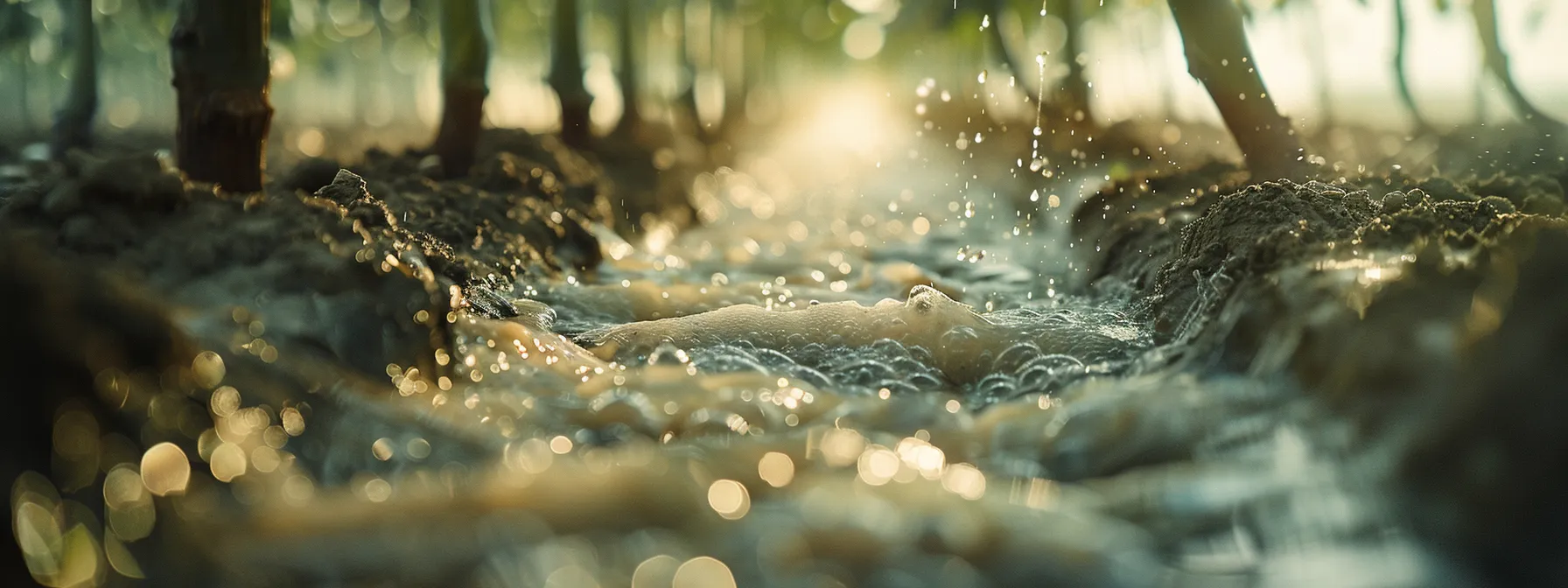
Drip irrigation systems offer a targeted and efficient approach to watering plants, focusing on delivering water directly to the root zones. This method reduces water waste compared to traditional methods and enhances plant health. Key components include backflow prevention, pressure regulators, and drip emitters, such as hole punch and elbow fittings. Understanding these basics facilitates effective water conservation and improved gardening practices.
Defining Drip Irrigation and Its Purpose
Drip irrigation is a highly efficient watering method designed to deliver water directly to the root zones of plants in the yard. This system utilizes a network of pipes and emitters to provide a consistent water supply, reducing wastage and ensuring that both lawn and garden receive the necessary moisture. By utilizing hole punch systems for precise water application, drip irrigation minimizes evaporation and runoff, leading to healthier plants and more sustainable watering practices.
Key Advantages Over Traditional Watering Methods
Drip irrigation systems offer significant advantages over traditional watering methods, particularly in terms of efficiency and effectiveness. By utilizing a pressure regulator, this system ensures that water is delivered at the optimal pressure, minimizing stress on plants and reducing water waste. For example, homeowners on a patio can achieve precise watering without the risk of over-saturation, making pruning and maintaining healthy plant growth easier and more effective.
Essential Components of a Drip Irrigation System
The essential components of a drip irrigation system are critical for ensuring efficient and effective water delivery to various landscape features, including a flower garden. Key elements such as emitters, tubing, and connectors must be selected based on the length of the run and the type of soil, such as loam, which affects water absorption and drainage. Properly configured, this system provides consistent moisture that promotes healthy plant growth while minimizing water waste associated with traditional watering methods.
Common Types of Drip Emitters and Their Uses
Common types of drip emitters play a vital role in delivering water efficiently to various plants based on their specific needs. Pressure-compensating emitters ensure consistent flow rates regardless of changes in elevation or soil type, making them ideal for uneven landscapes. Additionally, using a vacuum breaker or a backflow prevention device is essential to prevent contamination in the garden hose, ensuring clean water delivery while optimizing watering frequency for healthy plant growth.
How Drip Irrigation Conserves Water and Promotes Plant Health
Drip irrigation systems provide efficient watering solutions that directly benefit both plant health and water conservation. By using a precise nozzle to apply water slowly and directly to the root zones of shrubs and plants, these systems effectively reduce water waste associated with traditional spray methods. For instance, the targeted delivery minimizes evaporation while preventing debris accumulation around the plants, ensuring that a kitchen garden receives the necessary moisture without excess runoff.
- Targeted water delivery directly to the root zones
- Reduction of water waste compared to traditional methods
- Minimization of evaporation and runoff
- Prevention of debris accumulation around plants
- Enhanced overall plant health and growth
Now that the basics of drip irrigation are clear, it’s time to turn thoughts into action. Planning your setup will bring you closer to a flourishing garden, one drop at a time.
Planning Your Drip Irrigation Setup
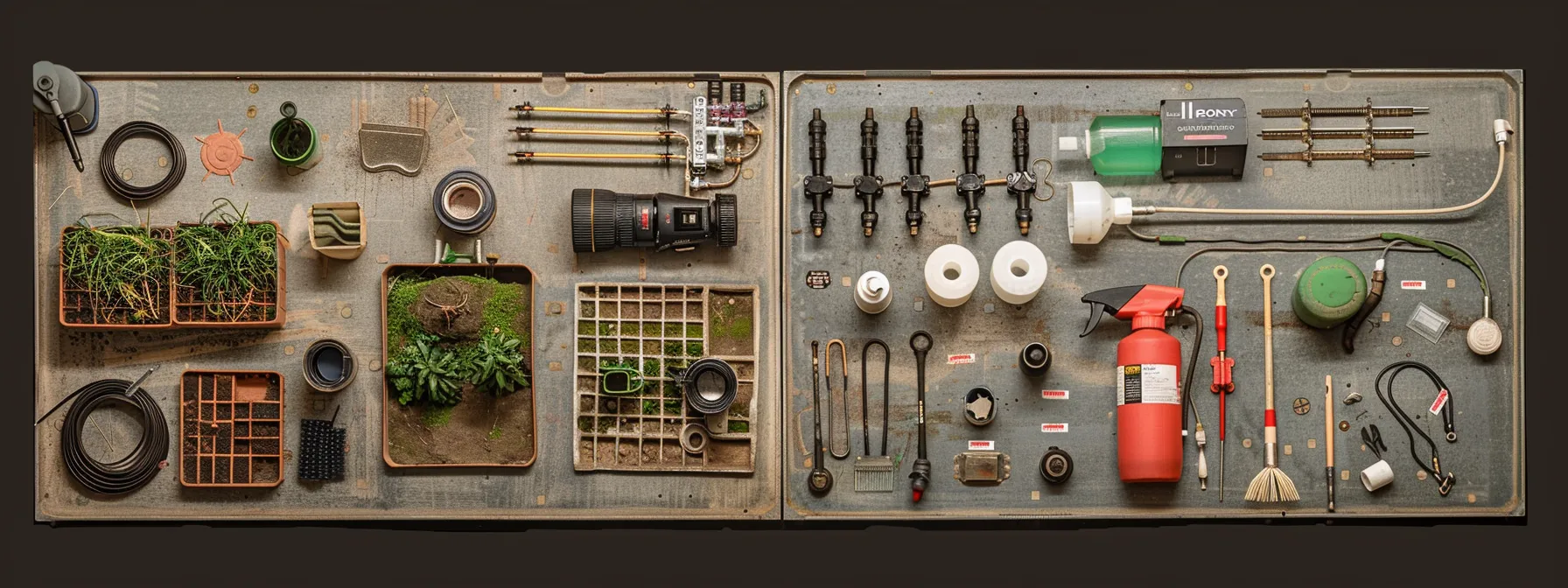
Planning Your Drip Irrigation Setup
Assessing the garden’s watering needs is crucial for a successful drip irrigation system. This includes creating a scale diagram of planting areas to visualize layout and flow. Knowing the water source and pressure requirements helps in selecting appropriate materials and tools. Budgeting for the project ensures all components, such as soil and sprayers, contribute to effective water conservation without leading to leaks.
Assessing Your Garden’s Watering Needs
Assessing a garden’s watering needs is a fundamental step in planning an effective drip irrigation system. Homeowners should consider plant types, growth stages, and the landscape layout, as each factor influences water requirements. Engaging a professional landscaper can provide valuable insights into proper watering schedules and emitter placement, ensuring that every plant receives the right amount of moisture for optimal health.
| Factor | Considerations | Why It Matters |
|---|---|---|
| Plant Types | Evaluate specific watering needs of each plant species. | Different plants have varying moisture requirements, leading to healthier growth. |
| Growth Stages | Account for seedlings, mature plants, and flowering stages. | Watering needs can change throughout a plant’s development. |
| Landscape Layout | Plan for slopes, shade, and sun exposure. | Understanding the landscape helps in optimizing water delivery. |
Creating a Scale Diagram of Your Planting Areas
Creating a scale diagram of planting areas is a vital step in planning a drip irrigation system. This diagram helps visualize the layout of the garden, including the placement of each plant, which is essential for determining the most effective water delivery points. By mapping out landscape features such as slopes and sunlight exposure, homeowners can ensure that their drip irrigation system addresses the specific watering needs of different plants, thereby optimizing water efficiency and promoting healthy growth.
Determining Water Source and Pressure Requirements
Determining the water source and pressure requirements is a crucial step in planning an effective drip irrigation system. The water source could be a municipal supply, well, or rainwater collection, and understanding its characteristics, including flow rate and pressure, enables homeowners to select the right components for their system. For example, if the pressure is too low, a booster pump may be necessary to ensure consistent water delivery to all areas of the garden, preventing dry spots and promoting even plant health.
Selecting Appropriate Materials and Tools
Selecting appropriate materials and tools is essential for a successful drip irrigation setup. Homeowners should invest in high-quality drip tubing, emitters, and connectors to ensure long-lasting performance and efficiency in water delivery. Additionally, understanding the unique needs of different plants will guide the selection of emitters that distribute water according to specific moisture requirements, making it easier to maintain healthy gardens and landscapes while conserving water effectively.
Budgeting for Your Drip Irrigation Project
Budgeting for a drip irrigation project is essential for effective planning and resource allocation. Homeowners should account for all necessary components, including tubing, emitters, connectors, and tools, as these can vary in price based on quality and features. Setting a budget not only helps manage expenses but also ensures that the drip irrigation system is both functional and tailored to meet specific watering needs:
- Identify necessary components and their costs.
- Consider potential additional expenses, such as soil preparation and testing.
- Evaluate the benefits of higher-quality materials for long-term savings.
With the plan sketched and the details set, the time has come to lay down the main supply line. This essential step forms the backbone of your drip irrigation system, ensuring each plant receives the water it needs.
Installing the Main Supply Line
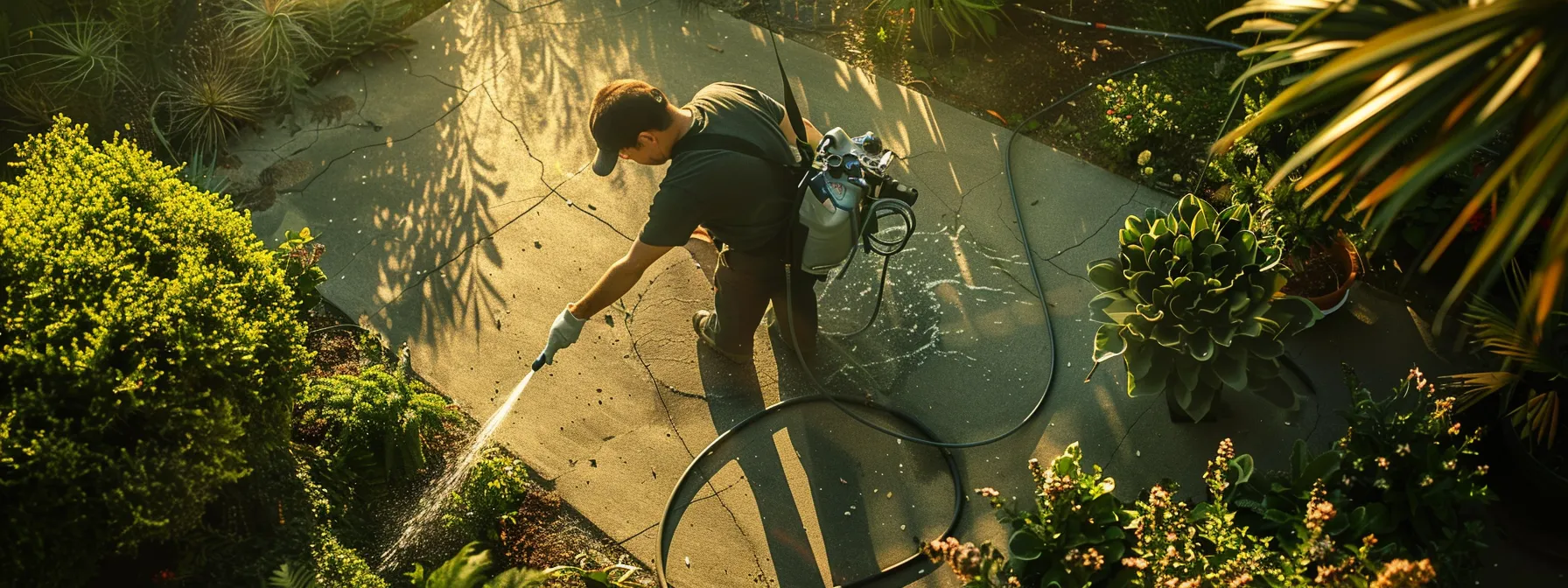
Installing the main supply line for a drip irrigation system is crucial for ensuring efficient water delivery. This process involves safely connecting to the water source, installing backflow preventers and pressure regulators, and efficiently laying out the main tubing. Properly securing the tubing while avoiding common mistakes is essential, as is testing the main line for leaks to ensure a fully functional system.
Connecting to the Water Source Safely
Connecting to the water source safely is a critical first step in installing a drip irrigation system. Homeowners must ensure that all connections comply with local plumbing codes to prevent contamination and maintain water quality. Using backflow preventers is essential to stop any potential pollutants from entering the water supply. Careful attention to securing fittings can minimize leaks, ensuring that the entire system operates efficiently and provides consistent water delivery to plants.
Installing Backflow Preventers and Pressure Regulators
Installing backflow preventers and pressure regulators is essential for maintaining the effectiveness and safety of a drip irrigation system. Backflow preventers act as a safeguard against contamination, ensuring that the water supply remains clean and free of pollutants. Meanwhile, pressure regulators control the water flow and maintain optimal pressure levels, which helps prevent damage to emitters and ensures consistent watering across the garden.
| Component | Function | Importance |
|---|---|---|
| Backflow Preventer | Prevents contamination of the water supply | Ensures drinking water safety and compliance |
| Pressure Regulator | Controls and maintains water pressure | Prevents emitter damage and ensures consistent delivery |
Laying Out the Main Tubing Efficiently
Laying out the main tubing efficiently is essential for maximizing the effectiveness of a drip irrigation system. Homeowners should follow a systematic approach, starting with measuring distances between plants and ensuring the tubing routes flow smoothly without sharp bends that can restrict water movement. Utilizing stakes can help secure the tubing in place, preventing movement during operation and ensuring that water reaches each emitter consistently, thereby promoting optimal plant growth and minimizing the risk of dry spots in the garden.
Securing the Tubing and Avoiding Common Mistakes
Securing the tubing correctly is vital for the success of a drip irrigation system. Homeowners should use stakes or holders to anchor the tubing in place, which prevents movement that could lead to drought conditions in specific areas of the garden. It is equally important to avoid common mistakes, such as sharp bends or excessive stretching of the tubing, as these issues can restrict water flow and reduce the system’s overall efficiency. By focusing on these details, gardeners can enhance watering effectiveness and promote healthier, thriving plants.
Testing the Main Line for Leaks
Testing the main line for leaks is a critical step in ensuring the reliability of a drip irrigation system. After installation, it is essential to turn on the water supply and inspect all connections and tubing for any signs of leakage. Homeowners should look for dripping or pooling water around joints, as these issues can lead to significant water loss and affect the system’s efficiency. Promptly addressing any leaks can prevent costly damage and ensure that the entire irrigation system functions optimally, promoting healthy plant growth and effective water conservation.
The main supply line lay ready, a solid foundation for what was to come. Next, the team would carefully set up the distribution lines and emitters, ensuring every plant received the care it needed to thrive.
Setting Up Distribution Lines and Emitters
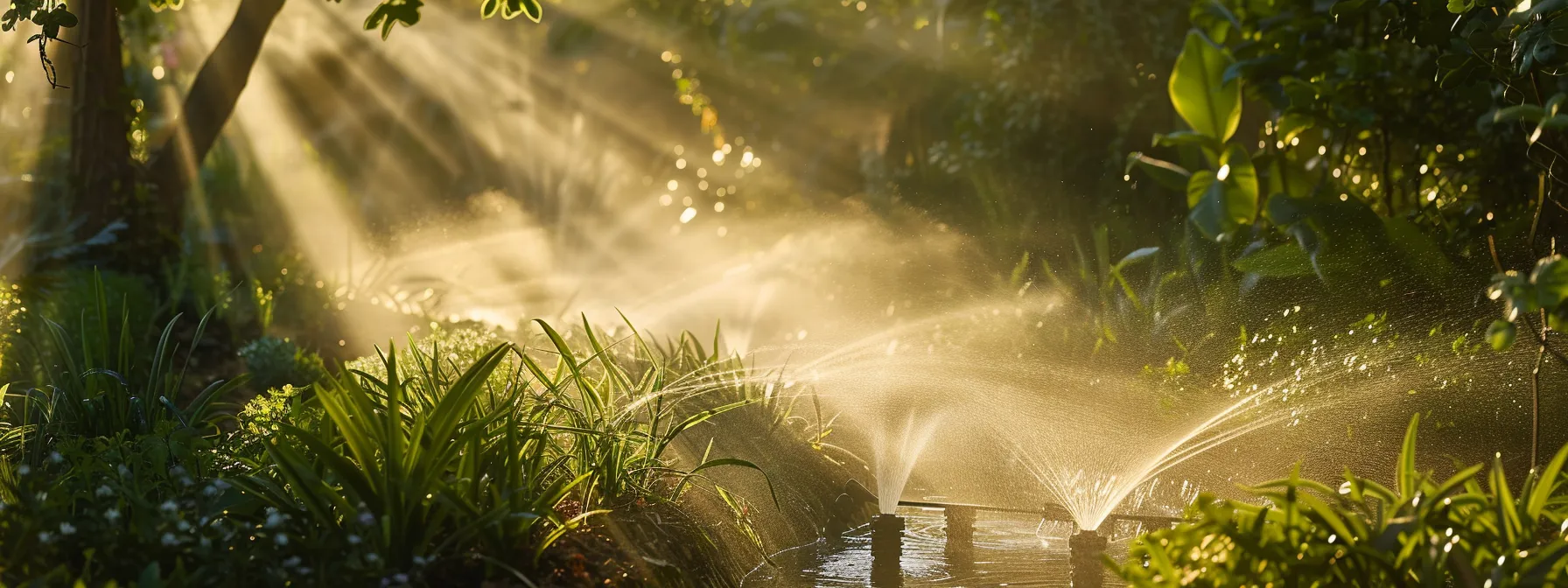
Setting Up Distribution Lines and Emitters
Planning the placement of distribution lines is essential for achieving efficient watering in a drip irrigation system. Properly installing emitters near plants ensures that water reaches their root zones effectively. Using connectors and adapters correctly is vital for maintaining a leak-free system. Additionally, adjusting emitter flow rates for different plants helps cater to their unique needs, while implementing techniques for even water distribution maximizes moisture delivery throughout the garden.
Planning the Placement of Distribution Lines
Planning the placement of distribution lines is critical for maximizing the efficiency of a drip irrigation system. Proper positioning ensures that water reaches the root zones of each plant effectively, promoting optimal growth and reducing water waste. Homeowners should consider factors such as plant spacing and water requirements to outline a layout that caters to the unique needs of various species, thereby enhancing overall garden health.
Installing Emitters Near Plants Effectively
Installing emitters near plants effectively is crucial for ensuring efficient water distribution in drip irrigation systems. Emitters should be placed close to the root zones of each plant to maximize water absorption while minimizing evaporation and runoff. By tailoring the emitter placement based on specific plant needs, such as adjusting for larger or smaller root systems, homeowners can enhance plant health and ensure that every species receives the appropriate moisture, fostering a thriving garden environment.
Using Connectors and Adapters Correctly
Using connectors and adapters correctly is essential for a seamless drip irrigation setup. These components must be securely attached to the tubing to prevent leaks and ensure efficient water delivery. Homeowners should choose connectors that match the diameter of the tubing and employ tools specifically designed for this purpose to achieve a tight seal, thus avoiding common issues such as drips and inconsistent water flow:
- Ensure proper size matching of connectors and tubing.
- Utilize specialized tools for secure fittings.
- Regularly check connections for signs of wear or leaks.
Adjusting Emitter Flow Rates for Different Plants
Adjusting emitter flow rates for different plants is essential to ensure efficient water distribution in a drip irrigation system. Each plant species has unique moisture requirements, and by setting the right flow rates, homeowners can provide adequate hydration without over or under-watering. For instance, using emitters with variable flow rates allows for tailored watering solutions, helping to maintain healthy plants while conserving water and promoting robust growth across the garden.
Techniques for Even Water Distribution
To achieve even water distribution in a drip irrigation system, homeowners should consider employing techniques such as utilizing pressure compensating emitters and properly spacing distribution lines. This ensures that each plant receives an adequate and uniform water supply, minimizing dry spots and promoting healthy growth. Regular monitoring and adjustment of emitter flow rates, along with strategic placement based on plant needs, can enhance moisture delivery, addressing common challenges in ensuring all plants receive sufficient hydration:
| Technique | Description | Benefit |
|---|---|---|
| Pressure Compensating Emitters | Emitters that adjust flow rates based on pressure variations. | Ensures uniform water delivery across uneven landscapes. |
| Proper Spacing of Distribution Lines | Arranging lines to minimize gaps between plant coverage. | Reduces the chances of dry spots while enhancing overall efficiency. |
| Regular Monitoring and Adjustment | Consistently checking and adjusting emitter functionality. | Addresses changing plant water requirements and conditions. |
With the distribution lines in place, plants will soon drink deep. It’s time to consider how to make this system work for you, allowing water to flow at the touch of a button.
Automating Your Drip Irrigation System
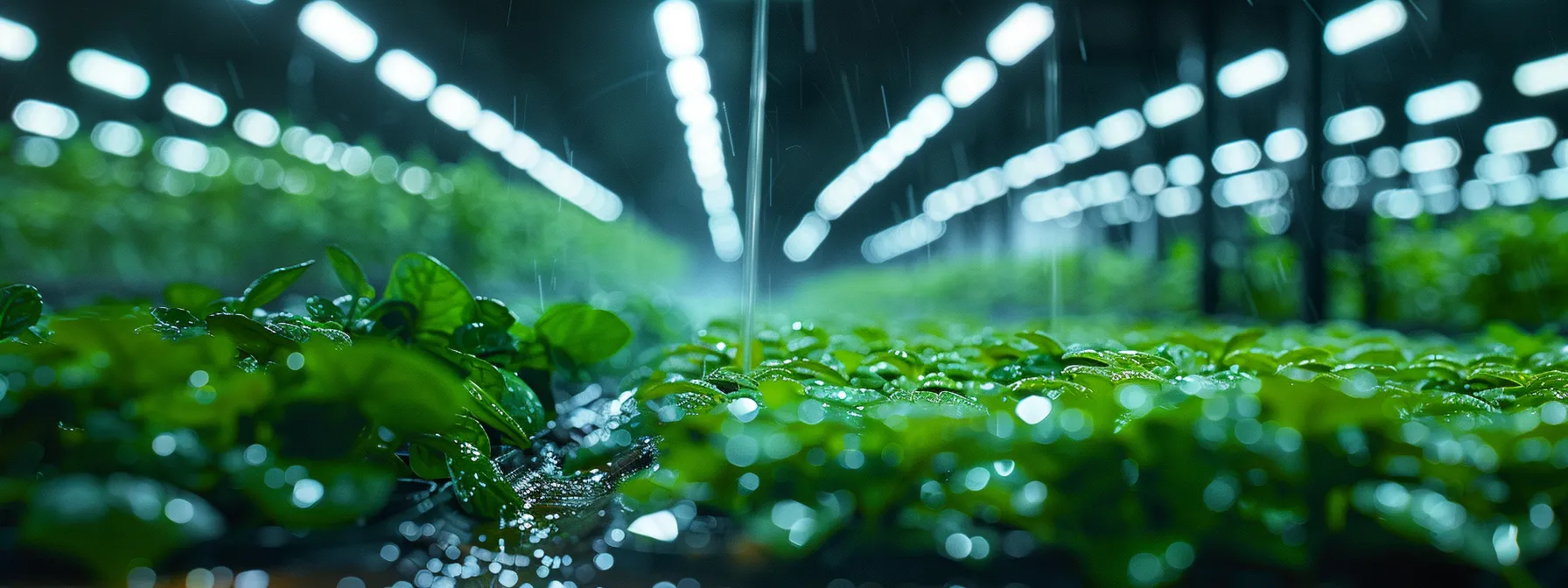
Automating a drip irrigation system is essential for achieving efficient watering with minimal effort. Key topics include choosing the right timer or controller, programming optimal watering schedules, and integrating moisture sensors and rain shut-off devices. Additionally, syncing multiple zones and valves ensures balanced coverage. Finally, troubleshooting potential automation issues helps maintain system functionality and reliability.
Choosing the Right Timer or Controller
Choosing the right timer or controller for a drip irrigation system is essential for automating efficient watering. A programmable timer allows homeowners to set specific watering schedules based on plant needs, local weather, and soil moisture conditions. For example, smart controllers can adapt watering times and durations according to real-time feedback from moisture sensors, effectively preventing overwatering and ensuring the garden remains healthy and vibrant.
| Feature | Description | Benefit |
|---|---|---|
| Programmable Timer | Sets customized watering schedules. | Ensures plants receive adequate moisture without manual intervention. |
| Smart Controller | Adjusts watering based on real-time data. | Prevents overwatering by adapting to environmental conditions. |
| Moisture Sensors | Detects soil moisture levels. | Optimizes watering frequency and duration, promoting plant health. |
Programming Watering Schedules for Optimal Results
Programming watering schedules effectively is a vital aspect of automating a drip irrigation system. Homeowners should take into account factors such as plant water requirements, seasonal changes, and local weather conditions. For instance, adjusting watering durations and frequencies during hot summer months can prevent overwatering or underwatering, ensuring that plants receive just the right amount of moisture to thrive. This approach not only conserves water but also promotes healthier growth across the garden, leading to lush and vibrant landscapes:
| Season | Watering Frequency | Duration (minutes) |
|---|---|---|
| Spring | 2-3 times a week | 30-40 |
| Summer | 3-5 times a week | 40-60 |
| Fall | 2-3 times a week | 20-30 |
| Winter | 1 time every 1-2 weeks | 10-20 |
Integrating Moisture Sensors and Rain Shut-Off Devices
Integrating moisture sensors and rain shut-off devices into a drip irrigation system significantly enhances its efficiency and effectiveness. These devices monitor soil moisture levels and local precipitation, ensuring that watering only occurs when necessary. For instance, moisture sensors can prevent overwatering during periods of rain, while rain shut-off devices automatically halt irrigation to conserve water, ultimately promoting healthier plants and saving homeowners on water costs.
Syncing Multiple Zones and Valves
Syncing multiple zones and valves in a drip irrigation system is essential for achieving balanced and efficient watering across different areas of the garden. This process involves programming the system to water various zones based on their specific requirements, ensuring that plants in shaded areas receive adequate moisture while those in sunny spots are supported accordingly. By effectively managing these zones, homeowners can optimize water usage and promote healthy growth throughout the landscape:
| Zone | Watering Frequency | Recommended Duration |
|---|---|---|
| Shaded Area | 2-3 times a week | 20-30 minutes |
| Sunny Area | 3-4 times a week | 30-40 minutes |
| Vegetable Garden | 3-5 times a week | 40-50 minutes |
Troubleshooting Automation Issues
Troubleshooting automation issues in a drip irrigation system is essential for maintaining efficient watering and preventing plant distress. Homeowners may encounter problems such as timers failing to activate or inconsistent water flow due to clogged emitters. Examining connections, checking for leaks, and ensuring that sensors are functioning correctly can often resolve these challenges, allowing for optimal moisture delivery tailored to the garden’s needs.
Every system needs care to thrive. Understanding how to maintain and troubleshoot your drip irrigation will keep your garden healthy and save you time.
Maintaining and Troubleshooting the System
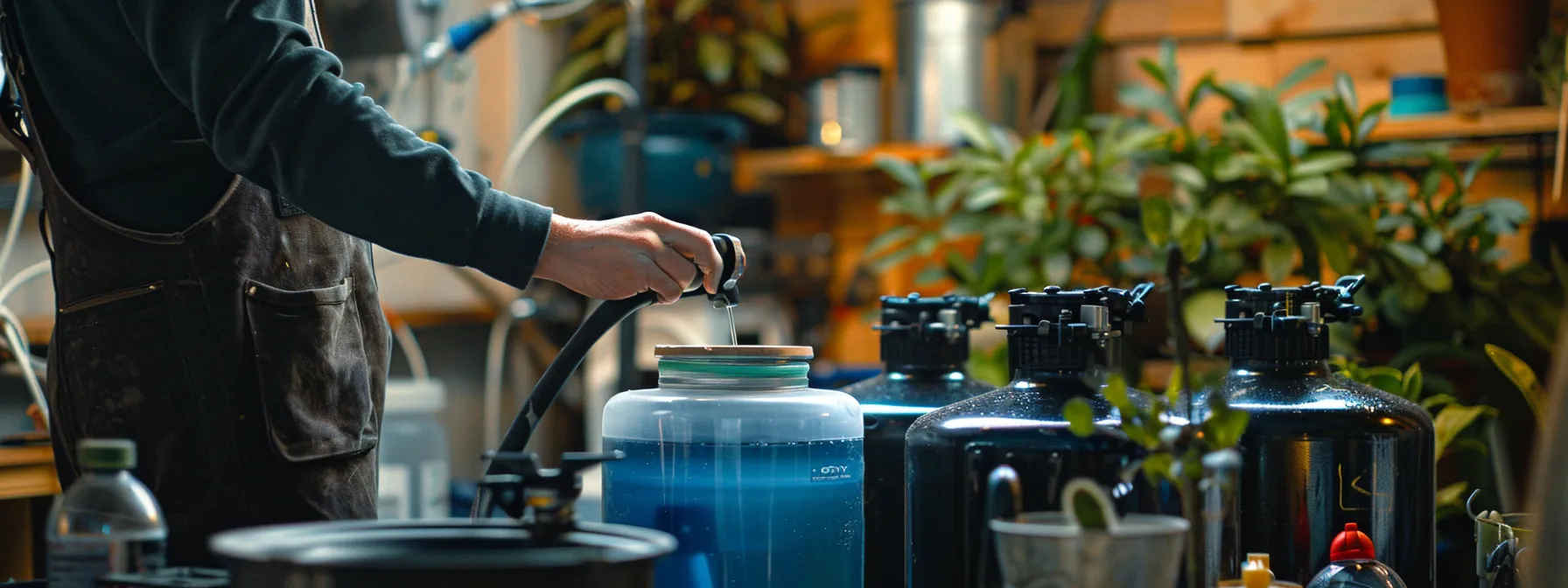
Regular inspection and upkeep are essential for maintaining an efficient drip irrigation system. This includes cleaning filters and preventing clogs to ensure optimal flow. Homeowners should also consider seasonal adjustments and winterization techniques to protect their system during colder months. For those looking to expand or modify their existing setup, practical solutions can enhance watering capabilities. Additionally, understanding how to solve common drip irrigation problems will help ensure longevity and functionality.
Regular Inspection and Upkeep Tips
Regular inspection and upkeep of a drip irrigation system are vital for ensuring optimal performance and water efficiency. Homeowners should routinely check for leaks, clogs, and any signs of wear in the tubing and emitters to prevent water loss and ensure adequate moisture delivery to plants. Conducting these checks not only prolongs the life of the system but also enhances overall plant health by ensuring that water reaches the root zones effectively.
Cleaning Filters and Preventing Clogs
Cleaning filters and preventing clogs in a drip irrigation system are essential tasks that can enhance the efficiency of watering. Homeowners should regularly check filters to remove sediment and debris that can impede water flow, ensuring that emitters function properly. For example, cleaning the filter every few months can help avoid blockages and maintain consistent moisture delivery to plants, which ultimately supports healthy growth and maximizes the effectiveness of the irrigation system:
| Task | Frequency | Description |
|---|---|---|
| Inspect Filters | Every 1-3 months | Check for buildup of debris and clean as needed to ensure clear water flow. |
| Clean Emitters | As needed | Remove any blockages or clogs to maintain optimal performance. |
| Flush System | Annually | Run water through the system to clear out any accumulated sediment. |
Seasonal Adjustments and Winterization
Seasonal adjustments and winterization are vital for maintaining a drip irrigation system’s efficiency and longevity. As temperatures drop, homeowners should purge the system of water to prevent freezing, as ice expansion can damage tubing and emitters. Additionally, adjusting watering schedules based on seasonal weather changes allows for optimal moisture delivery, ensuring plants receive adequate hydration without waste during colder months.
Expanding or Modifying Your Existing Setup
Expanding or modifying an existing drip irrigation setup requires careful planning and evaluation of the current system’s efficiency. Homeowners should assess the garden’s evolving irrigation needs to determine if additional lines or emitters are necessary to support new plantings or altered landscape features. Simple modifications, such as adding inline filters or adjusting emitter flow rates, can significantly improve water delivery efficiency and ensure that all plants receive the moisture they need for healthy growth:
- Evaluate current watering requirements.
- Determine the need for additional supplies or configurations.
- Adjust components to enhance water distribution effectiveness.
- Monitor system performance after modifications.
Solving Common Drip Irrigation Problems
Solving common drip irrigation problems requires a systematic approach to identify and address issues effectively. Homeowners should regularly inspect their systems for common issues such as clogged emitters or leaks in the tubing that hinder water delivery. For instance, if plants show signs of wilting or uneven moisture, checking and cleaning emitters can restore proper water flow and promote healthier plant growth.
| Common Problem | Symptoms | Solutions |
|---|---|---|
| Clogged Emitters | Plants show signs of under-watering. | Inspect and clean emitters regularly to remove debris. |
| Leaks in Tubing | Pools of water around connections or tubing. | Check fittings, tighten connections, and replace damaged sections. |
| Inconsistent Water Flow | Some plants are over-watered while others are dry. | Adjust flow rates and ensure even emitter placement. |
Conclusion
A complete drip irrigation setup guide is essential for achieving efficient and sustainable watering practices in both residential and commercial gardens. Understanding the components, layout planning, and maintenance techniques allows homeowners to conserve water while promoting healthy plant growth. By implementing these practices, individuals can ensure their gardens receive the appropriate moisture tailored to specific plant needs. Embracing this knowledge not only enhances the overall health of plants but also contributes to responsible water usage in gardening.


